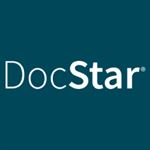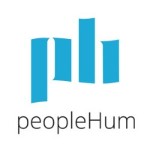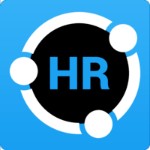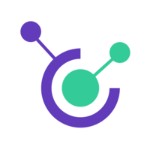You’re probably here because you’ve heard a bit about HR analytics and you’re wondering, “What’s all the fuss about?” Well, you’re in for a treat. HR analytics isn’t just a buzzword; it’s a revolutionary approach that’s reshaping how businesses handle their most valuable asset – their people.
In this post, I’ll take you on a deep dive into the world of predictive HR analytics. We’ll explore what it is, why it’s important, and how it can totally revamp your workplace strategies. Whether you’re an HR professional, a business leader, or just curious about the latest trends in the business world, this post has something for you.
Let’s start with a scenario: Imagine you’re the captain of a ship. You have a map and a compass, but what if you could have a sophisticated GPS system showing you not only the best route but also the condition of your ship, the wellbeing of your crew, and the most efficient ways to use your resources?
That’s what predictive HR analytics does for businesses. It takes the guesswork out of managing people and provides data-driven insights that can lead to more informed decisions.
So, buckle up and get ready to discover a few examples of how HR analytics can transform your HR department from a traditional, administrative function into a strategic powerhouse, driving your organization forward.
The Rise of HR Analytics
HR analytics, also known as people analytics, is the use of data and data analysis techniques to understand, improve, and make human resources analytics optimize the workforce and workplace. It’s about making data-driven decisions regarding human resources to enhance business outcomes, improve performance, and reduce human error.
The concept of HR analytics isn’t entirely new, but its importance has skyrocketed in recent years. Why? Well, businesses have realized that their people are not just a cost center but a critical investment. By analyzing and gathering data more about employees, companies can make smarter decisions that not only benefit the organization but also enhance employee satisfaction and productivity.
Why HR Analytics Matters
Think about it – your workforce is diverse and dynamic. Each employee brings unique skills, experiences, and motivations to the table. HR analytics helps you understand these nuances and leverage them to achieve your business goals. It enables you to:
- Predict and Plan: Anticipate future workforce needs and plan accordingly.
- Identify Trends: Spot patterns in employee behavior, performance, and turnover.
- Improve Employee Experience: Understand what drives employee satisfaction and engagement.
- Enhance Decision Making: Make more informed decisions about hiring, training, promotions, and more.
- Drive Business Performance: Align HR strategies with business objectives to drive growth and success.
The Evolution of HR Analytics
HR analytics has evolved from basic record-keeping to sophisticated predictive analytics. In the past, HR departments primarily focused on administrative tasks and compliance. Now, they’re increasingly seen as strategic partners, using analytics to transform data and to have data scientists provide insights that impact the entire organization.
Key Points:
- HR analytics transforms HR management with data-driven insights.
- It’s essential for predicting workforce needs, identifying trends, improving employee experience, and enhancing decision-making.
- The field has evolved from administrative tasks to strategic planning.
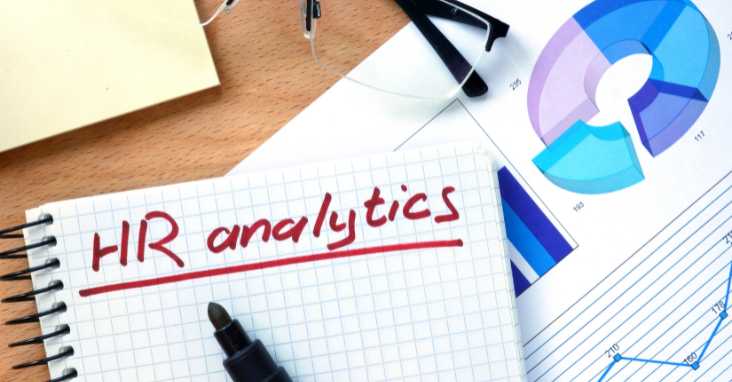
Understanding HR Analytics
Alright, let’s dive into the nitty-gritty of HR analytics. This section will lay the foundation for everything you need to know about this fascinating field. Trust me, by the end of this, you’ll be an HR analytics enthusiast!
What is HR Analytics?
At its core, HR descriptive analytics involves systematically collecting and analyzing various data points related to human resources. This data collected can range from employee performance and engagement levels to recruitment strategies and retention rates. The goal of descriptive analytics is to glean actionable insights that can improve decision-making, boost employee satisfaction, and ultimately drive business success.
The Types of Data in HR Analytics
Think of predictive analytics enables HR professionals see analytics like a treasure chest filled with different kinds of jewels, each representing a type of data:
- Recruitment Data: This includes the time to fill positions, the cost per hire, and the effectiveness of different recruitment channels.
- Performance Data: Employee productivity, quality of work, and goal attainment metrics fall under this category.
- Employee Engagement Data: Here, you’re looking at survey results, feedback scores, and other indicators of employee morale and engagement.
- Turnover Data: This covers reasons for leaving, turnover rates, and the costs associated with turnover.
- Learning and Development Data: This involves tracking training effectiveness, skill development, and career progression paths.
The Tools and Techniques
HR analytics isn’t just about collecting and analyzing data though; it’s about making sense of it. Here’s where tools and techniques come into play:
- Data Mining: Sifting through large datasets to find relevant patterns and trends.
- Predictive Analytics: Using data to forecast future trends and outcomes.
- Visualization Tools: These help in presenting data in an easily understandable format, like charts and graphs.
The Role of HR Analytics in Strategic Decision Making
Here’s where things get exciting. HR analytics is not just a back-office function; it’s a strategic tool that can influence major business decisions. For example, data on employee and involuntary turnover rates can inform retention strategies, while performance data can shape talent development programs. In essence, HR analytics bridges the gap between traditional levels of the HR functions: analytics, management and strategic business planning.
The Evolution of HR Analytics
We’ve come a long way from the days of simple record-keeping. HR analytics has evolved into a sophisticated discipline that leverages big data, AI, and machine learning. This evolution has transformed all four levels of HR analytics into a data-driven domain that can anticipate needs, predict outcomes, and deliver tailored solutions.
Key Points:
- HR analytics is about analyzing workforce data to improve decision-making and business outcomes.
- It covers various data types, including recruitment, performance, and engagement.
- Advanced tools and techniques like data mining and predictive analytics are used.
- HR analytics plays a crucial role in strategic decision-making, bridging HR and business objectives.
- The field has evolved significantly, incorporating big data, AI, and machine learning.

Benefits of HR Analytics in Business
Now that we have a solid understanding of what HR analytics is, let’s talk about why it’s a big deal in the business world. The benefits of HR analytics are vast and varied, touching every aspect of an organization. Here’s how it makes a difference:
Improved Recruitment Strategies
Finding the right talent is like looking for a needle in a haystack. HR analytics makes this hiring process seem a whole lot easier. By analyzing recruitment data, businesses can identify the most effective recruitment channels, understand the characteristics of successful employees, and streamline their hiring processes. This leads to better quality hires and a more efficient recruitment and hiring process.
Enhanced Employee Performance
Imagine if you could mine internal data to unlock the full potential of your workforce. HR analytics helps do just that. By analyzing performance data, companies can identify the drivers of high performance, tailor training programs to specific needs, and set more effective performance goals for current employees. This not only boosts individual performance but also elevates the overall productivity of the organization.
Reduced Employee Turnover
Employee and turnover rate can be a significant drain on human resources management alone. HR analytics provides insights into why employees leave and what can be done to retain them. By understanding the factors that contribute to the turnover rate, companies and human resource, can implement targeted retention strategies, improve employee satisfaction, and reduce the costs associated with employee churn.
Better Employee Engagement
Engaged employees are the backbone of any successful business. HR analytics enables companies to measure and analyze employee engagement levels. This data can be used to develop strategies that boost morale, enhance job satisfaction, and foster a positive work environment, leading to higher productivity and better business results.
Data-Driven Decision Making
Gone are the days of making HR decisions based on gut feelings. HR analytics provides a data-driven approach to decision-making to improve internal processes. Whether it’s about compensation, benefits, training, or any other top HR department or activity, analytics ensures that decisions are backed by solid data, leading to more effective and efficient outcomes.
Predictive Insights for Future Planning
HR analytics isn’t just about understanding the present; it’s also about predicting the future. By analyzing trends and patterns, businesses can anticipate future workforce needs, plan for changes in the labor market, and stay ahead of the curve. This proactive approach to workforce analytics helps in better resource allocation and strategic planning.
Aligning HR with Business Objectives
Perhaps one of the most significant benefits of HR analytics is its ability to align HR strategies with overall business objectives. By linking HR data to key metrics of business performance, companies can see how their workforce impacts their bottom line and adjust their HR strategies accordingly to drive business success.
Key Points:
- HR analytics improves recruitment strategies, leading to better hires.
- It enhances employee performance and reduces turnover.
- Employee engagement is better understood and boosted through data-driven strategies.
- Decision-making in HR becomes more effective and efficient with a data-backed approach.
- Predictive insights help in future workforce planning and staying ahead of market changes.
- HR analytics aligns HR strategies with business objectives, demonstrating the impact of HR on business performance.

Implementing HR Analytics in Your Organization
So, you’re convinced about the benefits of HR analytics and ready to bring this powerhouse into your organization. Great decision! But where do you start? Implementing HR analytics can seem daunting, but don’t worry, I’ve got you covered. Let’s break down the process into manageable steps.
Step 1: Define Your Objectives
Before diving into the data, it’s crucial to know what you’re looking diagnostic analytics to achieve. Do you want to reduce your turnover rate, improve employee engagement, or enhance recruitment strategies? Defining clear objectives will guide your analytics efforts and ensure you’re collecting relevant data.
Step 2: Gather the Right Data
Data is the fuel for your HR analytics engine. Start by identifying the types of data that are relevant to your objectives. This could include employee performance metrics, turnover rates, engagement survey results, and more. Ensure you have systems in place to collect this and other data more efficiently and accurately.
Step 3: Choose the Right Tools
With a plethora of HR analytics tools available, choosing the right one can be tricky. Look for tools that align with your objectives, fit within your budget, and can integrate with your existing HR systems. Whether you opt for a comprehensive platform like Workday or specialized tools like Tableau for data visualization, make sure it meets your specific needs.
Step 4: Develop Your Analytics Team
HR analytics requires a specific skill set. You’ll need people who can not only crunch numbers but also interpret data and translate it into actionable insights. This might mean training your existing HR staff, hiring new talent, or even partnering with external experts.
Step 5: Analyze and Interpret Data
Now comes the fun part – diving into the data. Use your analytics tools to both collect data and identify patterns, trends, and insights from historical data. But remember, raw data alone doesn’t speak for itself. You need to interpret what it means for your organization and how it relates to your objectives.
Step 6: Take Action and Monitor Results
Once you have your insights, it’s time to put them into action. Develop strategies and initiatives based on your findings. But don’t stop there – continuously monitor the results of these actions. Are they helping you achieve your objectives? Adjust your strategies as needed based on ongoing data analysis.
Step 7: Foster a Data-Driven Culture
For HR analytics to truly succeed, it needs to be part of your organizational culture. Encourage data-driven decision-making throughout the organization. Share your findings and successes with other departments and get buy-in from top management. A data-driven culture not only supports your HR analytics efforts but also contributes to overall business success.
Key Points:
- Start by defining clear objectives for your HR analytics initiatives.
- Gather relevant data and choose the right tools that align with your objectives.
- Build or train a team capable of analyzing and interpreting HR data.
- Implement actions based on insights and continuously monitor results for effectiveness.
- Promote a data-driven culture across the organization for broader acceptance and success of HR analytics.

FAQ
What Is HR Analytics?
HR analytics is the application of data analysis and data-driven decision-making to human resource management.
How Does HR Analytics Improve Decision Making?
It provides insights based on data, using descriptive analytics, helping leaders make informed decisions about workforce management.
Can Small Businesses Benefit from HR Analytics?
Absolutely! HR analytics is scalable and can provide significant benefits to businesses hr teams of all sizes.
What Types of Data Are Analyzed in HR Analytics?
Data related to recruitment, performance, retention, employee engagement, financial impact, and more.
How Does HR Analytics Impact Employee Engagement?
It identifies factors that drive engagement and helps in developing strategies to enhance it.
What Are the Challenges in Implementing HR Analytics?
Challenges include data quality, privacy concerns past data mine, and the need for skilled personnel for quality data and diagnostic analytics past performance mine.
How Can HR Analytics Predict Workforce Trends?
By using predictive model using data scientists and analyzing historical data, it can predict future trends and help in strategic planning.
What Tools Are Used in HR Analytics?
Tools range from basic HRIS systems to advanced analytics platforms.
How Does HR Analytics Align with Business Goals?
It aligns HR strategies with business objectives, driving overall organizational performance.
What Is the Future of HR Analytics?
It is expected to become a valuable tool, more than predictive analytics and diagnostic analytics and integrated with overall business strategy.
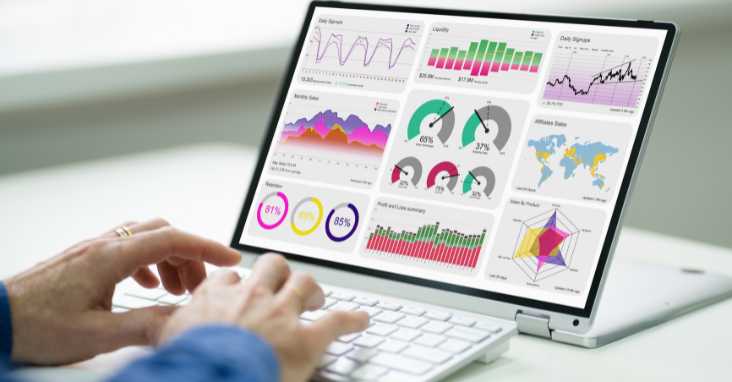
Software Tools for HR Analytics
Navigating the world of HR analytics tools can be a bit overwhelming, but the right software can significantly amplify your HR analytics efforts. Here’s a roundup of some stellar tools, each with unique features to help you master the art of HR analytics.
1. Tableau
Why It’s Useful: Tableau is a powerhouse in data visualization. It’s perfect for transforming complex data sets into user-friendly, interactive dashboards and reports, making it easier to grasp and act on your data.
2. Workday
Why It’s Useful: Workday is a comprehensive solution, offering more than just analytics. It’s a full-suite HR management tool that provides insights into every facet of your workforce. It’s ideal for those seeking an all-encompassing, integrated HR platform.
3. SAS for HR
Why It’s Useful: Known for its advanced analytics prowess, SAS is the tool of choice if you’re ready to delve into deep, predictive analytics and sophisticated data analysis.
4. Zoho People
Why It’s Useful: Tailored for small to medium-sized businesses, Zoho People is accessible, budget-friendly, and offers a range of features from basic HR management to more complex analytics.
5. IBM Kenexa
Why It’s Useful: IBM Kenexa shines in workforce analytics and talent management. It’s especially strong in employee engagement and talent acquisition, providing deep insights in these areas.
6. Visier
Why It’s Useful: Visier is known for its excellent people analytics and workforce planning features. It’s designed to deliver straightforward, actionable insights and is very user-friendly.
7. BambooHR
Why It’s Useful: Perfect for smaller businesses, BambooHR offers a simple yet effective interface with robust reporting and analytics capabilities. It’s an excellent choice for those starting with HR analytics.
8. PeopleFluent
Why It’s Useful: Focusing on talent management, PeopleFluent provides analytics features to support areas like performance management, succession planning, and compensation analysis.
9. UltiPro by Ultimate Software
Why It’s Useful: UltiPro brings together comprehensive HR, payroll, and talent management solutions with strong analytics features, suited particularly well for medium to large-sized businesses.
10. ADP Workforce Now
Why It’s Useful: ADP, a well-known name for payroll services, also offers robust HR and talent analytics through its Workforce Now platform. It’s a solid option for businesses of various sizes, especially those already using ADP for payroll services.
Choosing the Right Tool: Remember, when picking a tool, it’s essential to consider your specific needs, budget, and the scale of your organization. Some tools are more geared towards smaller businesses, while others cater to the complex requirements of larger enterprises. The goal is to find a software solution that not only effectively gathers and analyzes data but also integrates smoothly with your existing HR systems and internal processes.

Conclusion
As we wrap up, let’s reflect on our journey through the world of HR analytics. We’ve explored what HR analytics is, why it’s crucial for modern businesses, and how it can dramatically transform your own HR practices and strategies. From enhancing decision-making processes to predicting future workforce needs, HR analytics is indeed a game-changer.
But remember, it’s not just about data and numbers. It’s about people. At its heart, HR analytics is about understanding and optimizing the human aspect of your business. It’s about creating a workplace where employees feel valued and motivated, where talent is nurtured, and where business goals are achieved through strategic people management.
So, whether you’re just starting out or looking to enhance your existing HR data analytics practices, keep these points in mind. Embrace the power of data analytics, but don’t lose sight of the human element. After all, your people are your greatest asset.



